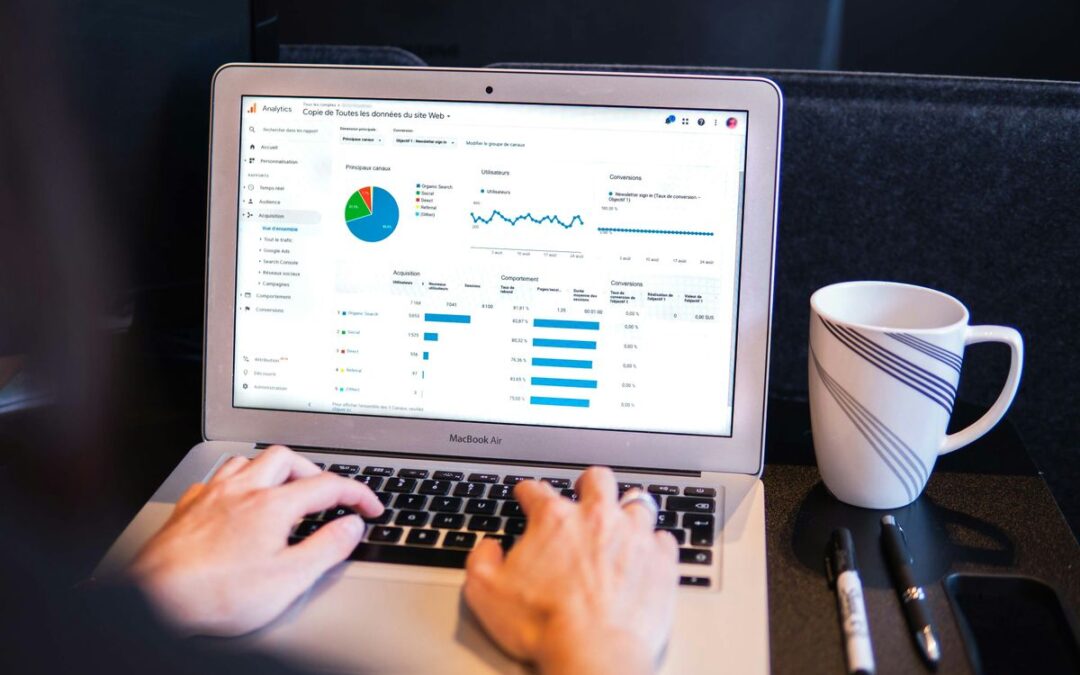Understanding A/B Testing in E-Commerce
TL;DR: A/B testing is crucial for e-commerce success, allowing businesses to optimize their platforms through data-driven decisions. It improves conversion rates, enhances user experience, and ensures smarter marketing strategies. Key elements to test include headlines, CTAs, layouts, and email subject lines. Methods like standard A/B testing, split URL testing, and multivariate testing provide insights into user behavior. Challenges include traffic requirements, metric selection, and external influences. Prioritizing high-impact tests and refining strategies based on results drive long-term growth. A/B testing empowers businesses to create seamless shopping experiences, increase sales, and maintain a competitive edge.
A/B testing is vital for e-commerce. It lets businesses compare two versions of a webpage or app to see which performs better. This process shows different versions to visitor segments at the same time and measures improvements in key metrics.
A/B testing helps us make data-driven decisions. It cuts down on guesswork, enhances user experience, and boosts e-commerce performance. By focusing on real data, we can fine-tune our online stores to increase conversion rates and customer satisfaction.
Here are some key benefits of A/B testing:
- Improved Conversion Rates: By finding which version of a webpage or app performs better, we can focus on elements that drive sales.
- Enhanced User Experience: Testing refines user interface elements, ensuring a smooth and engaging shopping experience.
- Data-Driven Insights: We gain valuable insights into user behavior, enabling informed decisions that align with customer preferences.
Why A/B Testing Matters for E-Commerce
A/B testing is essential for e-commerce success. It directly impacts conversion rates by addressing visitor pain points and optimizing existing traffic. By testing different elements, businesses can enhance the customer experience and make informed decisions based on real data.
Understanding customer behavior is at the heart of A/B testing. By analyzing how users interact with different versions of a webpage, businesses can tailor their strategies to meet specific audience needs. This adaptability leads to improved performance and greater profitability.
Consider these advantages of A/B testing:
- Increased Conversions: Testing variations helps identify what drives sales, leading to more effective strategies.
- Enhanced User Experience: By refining elements, businesses ensure a seamless and engaging journey for customers. For more insights on improving user interactions, explore strategies on optimizing e-commerce checkout to increase conversions.
- Data-Driven Strategy: Access to precise insights allows for informed decision-making that aligns with customer preferences.
A/B testing is more than a tool for comparison. It empowers e-commerce businesses to continuously improve and adapt their online presence, ensuring they meet the evolving needs of their audience. This approach not only boosts conversion rates but also strengthens overall business performance.
Key Elements to Test
A/B testing in e-commerce demands attention to specific elements within your online platform. It helps identify what resonates best with your audience, refining user experience and boosting conversion rates.
1. Headlines and Subheadlines: Testing these can reveal which wording draws more attention. It’s crucial to craft messages that captivate and engage visitors quickly.
2. Body Content: Different versions of product descriptions or blog posts can significantly impact user engagement. Experimenting with tone, style, and length can yield valuable insights.
3. Email Subject Lines: The first impression matters. Testing subject lines helps determine which encourages more opens and clicks, enhancing email marketing effectiveness.
4. Design Elements: Elements like color schemes, fonts, and images can affect perception and interaction. Testing these helps create a visually appealing and user-friendly interface. For more on creating a seamless user experience, explore our insights on the critical role of UI/UX design in e-commerce development.
5. Layout and Navigation: A well-organized site improves usability. Testing different layouts ensures visitors find what they need easily, reducing drop-off rates.
6. Forms and CTAs: Experimenting with form fields and call-to-action buttons can optimize lead generation and conversions. Small tweaks can lead to significant results.
7. Social Proof: Showcasing customer reviews or testimonials can build trust. Testing placement and presentation can enhance credibility and encourage purchases.
Focusing on these elements allows businesses to concentrate on impactful areas. Strategic A/B testing provides insights into user preferences, helping tailor strategies for better engagement and satisfaction.
Types of A/B Testing Methods
Standard A/B Testing: This method tests one element at a time. It helps you understand how specific changes, like a button’s color or text, impact user behavior. By isolating variables, you gain clear insights on what drives engagement and conversion.
Split URL Testing: With split URL testing, different versions of a webpage are hosted on separate URLs. This approach is useful when testing major design changes or entirely new page layouts. It provides a comprehensive view of how significant alterations affect user interaction.
Multivariate Testing: Multivariate testing examines multiple elements simultaneously. This method helps identify the best combination of changes that enhance user experience. Although more complex, it offers a detailed understanding of how different components work together to influence outcomes.
Multipage Testing: This method evaluates changes across multiple pages. It’s beneficial for testing modifications in a user journey, like an entire checkout process. By examining several pages together, you ensure consistency and flow, ultimately improving the shopping experience.
For more insights on improving your e-commerce store’s performance, consider exploring how data-driven decisions can drive growth. Each testing method offers unique insights.
Benefits of Implementing A/B Testing
A/B testing boosts e-commerce store performance and revenue. It solves user problems and enhances experience, leading to higher satisfaction and loyalty.
A/B testing enables data-driven decisions. It improves ROI by increasing conversions and keeping visitors on your site longer. It shows what users like, allowing safe changes that match customer preferences.
Key Benefits of A/B Testing in E-commerce:
- Fix User Problems: Finds and solves issues that prevent user engagement.
- Increased ROI: Boosts sales from current traffic without extra ad spend.
- Reduced Bounce Rates: Improves pages to maintain visitor interest.
- Low-Risk Modifications: Tests changes safely to avoid negative impacts.
A/B testing helps SEO by improving page elements and search rankings. It enhances marketing by revealing user behavior, leading to better campaigns. For more insights into optimizing e-commerce success, consider the importance of website audits to enhance user experience and conversion rates.
Statistical Approaches in A/B Testing
A/B testing helps you understand how changes affect your e-commerce store. Two main methods are frequentist and Bayesian. Each offers a unique approach to handling data, assessing probability, and making decisions.
Frequentist methods focus on long-term frequency. They use fixed data sets and pre-determined sample sizes to determine significance. This approach is straightforward and clear, making it popular. It helps you decide by examining how likely your data is under different scenarios.
Bayesian methods use prior knowledge or beliefs in the analysis. They update probabilities as new data arrives. This approach is flexible, adapting and learning as you go. Bayesian methods work well when businesses need to adjust quickly to changing conditions.
For those interested in exploring further insights into optimizing e-commerce strategies, our blog offers a wealth of information on leveraging data-driven decisions to enhance your digital presence.
Key Considerations:
- Data Handling: Frequentist uses fixed data; Bayesian adapts with new information.
- Probability: Frequentist evaluates within a set framework; Bayesian updates probabilities continuously.
- Decision-Making: Frequentist offers clear-cut decisions; Bayesian provides detailed insights.
Choose the method that suits your goals and test type. Understanding these methods helps you make better decisions and improve your strategies.
Steps to Set Up A/B Testing
To set up effective A/B testing, follow these steps:
- Research and Collect Data: Analyze your website’s performance. Look at metrics like bounce rate, conversion rate, and user engagement to spot issues.
- Formulate Hypotheses: Use your findings to form ideas about potential improvements. If you find a high bounce rate, you might think a more engaging homepage design could keep visitors longer.
- Create Variations: Design different versions of the webpage or app features you want to test. Make each variation clearly different – change layouts, colors, or call-to-action buttons.
- Design Tests: Decide on your test’s sample size and duration. Ensure you have enough participants and time to get meaningful results. Randomly assign visitors to each variation to avoid bias.
- Install A/B Testing Software: Choose an A/B testing tool that fits your needs. Many platforms offer easy integration with your website, providing the necessary analytics and tracking capabilities.
- Implement JavaScript Code: Use your A/B testing tool’s code to set up the test variations on your site. Place the code correctly within your site’s HTML to track user interactions accurately.
For businesses looking to enhance their e-commerce capabilities, consider exploring Shopify Ecommerce Development and Automation Integrations by Refindable, which can further improve online presence and conversion rates through strategic enhancements.
Running and Managing A/B Tests
Running and managing A/B tests requires a structured approach to ensure reliable outcomes. Start by determining the test duration based on your sample size and customer behavior patterns. A larger sample size typically provides more accurate results, allowing you to draw meaningful conclusions.
Accurate performance measurement is crucial. Track key metrics—conversion rate, bounce rate, and average order value—to pinpoint the most effective variation. Use analytics tools that integrate seamlessly with your platform for precise data collection. For insights into optimizing your e-commerce strategies, you can explore data-driven e-commerce growth strategies available on Refindable’s resources page.
Tips for managing A/B tests:
- Define Clear Goals: Establish what you want to achieve to ensure focused testing.
- Monitor Continuously: Regularly check performance metrics to track progress and identify trends.
- Avoid Overlapping Tests: Conduct tests one at a time to prevent data contamination.
- Document Everything: Keep detailed records of test setups, changes made, and results for future reference.
By adhering to these practices, you harness the full potential of A/B testing. This disciplined approach helps refine strategies, boost performance, and enhance user satisfaction in e-commerce environments.
Analyzing A/B Test Results
Analyzing A/B test results requires a clear focus on metrics that reveal the performance of different variations. Start by examining the conversion rates, which indicate the success of the tested elements. Identify which version led to higher conversions and analyze any changes in user engagement.
Statistical significance is crucial. It tells you if the observed differences are meaningful or due to chance. Make sure your results have a high confidence level to support data-driven decisions.
Engagement metrics offer deeper insights. Look at how users interact with the variations. Measure time spent on pages, click-through rates, and bounce rates. These metrics help understand user behavior and pinpoint areas for improvement.
For those interested in optimizing their e-commerce platforms, exploring Shopify e-commerce development and SEO improvements can provide valuable insights into enhancing conversion rates and user engagement. This includes integrating automation and improving website speed to boost revenue.
Segmenting data is a powerful technique. Break down results by user demographics, device types, or traffic sources. This provides a more granular view and uncovers segment-specific outcomes, enabling targeted refinements.
- Conversion Rates: Identify which variation boosts conversions.
- Statistical Significance: Ensure results are reliable.
- User Engagement: Measure interactions for insights.
- Data Segmentation: Gain detailed understanding through segmentation.
Prioritizing A/B Testing Opportunities
A structured approach to prioritizing A/B testing opportunities is essential in e-commerce. This ensures that resources are allocated efficiently, driving optimal results. Prioritization frameworks like CIE (Conversion Impact Ease) and PIE (Potential Importance Ease) guide businesses in identifying tests with the highest potential impact.
CIE focuses on evaluating each test based on its potential to enhance conversion rates, the impact it could have on business goals, and the ease of implementation. This framework helps streamline decision-making and directs attention toward initiatives that can drive significant improvements without extensive resources.
PIE considers potential, importance, and ease. It assesses the possible benefits of each test, its significance in achieving strategic objectives, and the simplicity of execution. By weighing these factors, businesses can concentrate on areas that promise substantial returns and align with their overall goals.
Key Steps in Prioritizing A/B Testing:
- Assess Conversion Impact: Determine how changes might affect conversion rates.
- Evaluate Importance: Identify the significance of each test to business objectives.
- Consider Ease of Implementation: Focus on tests that are easier to execute with available resources.
- Allocate Resources Wisely: Direct efforts towards tests with a high likelihood of success.
This approach not only optimizes testing processes but also enhances the overall performance of e-commerce stores. For more insights into optimizing e-commerce success, you might explore our dedicated Shopify archives that emphasize the importance of analytics and strategic processes.
Using Test Results to Enhance Strategy
Analyzing A/B test results provides valuable insights for refining business strategies. By understanding which variations outperform others, businesses can make data-driven adjustments that enhance user experience and boost conversion rates.
These results guide strategic changes. For instance, if a particular headline increases engagement, it signals the need to adopt similar language across other marketing materials. A high-performing call-to-action (CTA) can be replicated on other pages to drive conversions consistently. For companies in the financial services sector, leveraging HubSpot’s tools can be particularly effective in optimizing content and nurturing leads through automation workflows.
Actions derived from test insights:
- Refinement of Messaging: If a specific tone or style in headlines or body content resonates with users, apply it across platforms for cohesive communication.
- Design Adjustments: Successful design elements, like color schemes or button styles, should be implemented site-wide for a unified look that appeals to users.
- Optimized User Journeys: Insights into effective navigation or layout can refine the overall user journey, making it seamless and intuitive.
- Enhanced Email Campaigns: Test results from subject lines or email content help craft more engaging and effective campaigns, increasing open and click rates.
- Targeted Marketing Strategies: Understanding user preferences allows for tailored marketing approaches that align with customer desires, improving engagement and satisfaction.
Challenges and Limitations of A/B Testing
A/B testing offers valuable insights, yet it presents challenges and limitations that businesses must navigate to ensure effective outcomes. One primary challenge is the need for sufficient traffic. Without adequate visitor numbers, achieving statistically significant results can be difficult, leading to inconclusive or misleading findings.
Defining appropriate metrics is crucial. Businesses must select metrics that accurately reflect the goals of a test. Misaligned metrics can obscure the true impact of changes and hinder decision-making.
Seasonal and external influences can skew results. Factors such as holidays or market trends may affect user behavior, complicating the interpretation of test outcomes. Awareness of these influences allows businesses to adjust timing and scope accordingly.
Key considerations:
- Traffic Levels: Ensure enough visitors for meaningful results.
- Metric Selection: Align metrics with test objectives.
- Influence Awareness: Account for external factors affecting behavior.
For businesses looking to enhance their digital strategies, exploring successful SEO implementations can be insightful. For instance, our case study on Clarity’s SEO improvements demonstrates how technical and on-page strategies can significantly boost organic traffic and keyword rankings.
Key Takeaways on A/B Testing in E-Commerce
A/B testing is vital for e-commerce success. It helps businesses understand customer behavior and improve their online platforms. A/B testing identifies what drives conversions, enhances user experience, and grows your business.
A structured testing approach offers many benefits. It enables data-driven decisions, improving marketing strategies and website performance. A/B testing insights help you adapt quickly to market changes, keeping your e-commerce store competitive.
Key benefits of A/B testing in e-commerce include:
- Better Conversion Rates: Discover what influences buying decisions to create effective sales strategies.
- Enhanced User Experience: Tailor your website to user preferences for a smooth, engaging experience.
- Smarter Decisions: Use detailed analytics to plan and improve your strategy.
- Satisfied Customers: Understand their needs to create a better shopping experience.
Our expertise in combining growth strategies with marketing automation amplifies A/B testing power. We offer solutions like Shopify development and CRM integration to help you use these insights for improved performance. A/B testing is essential for e-commerce stores aiming to grow and reach their full potential.





